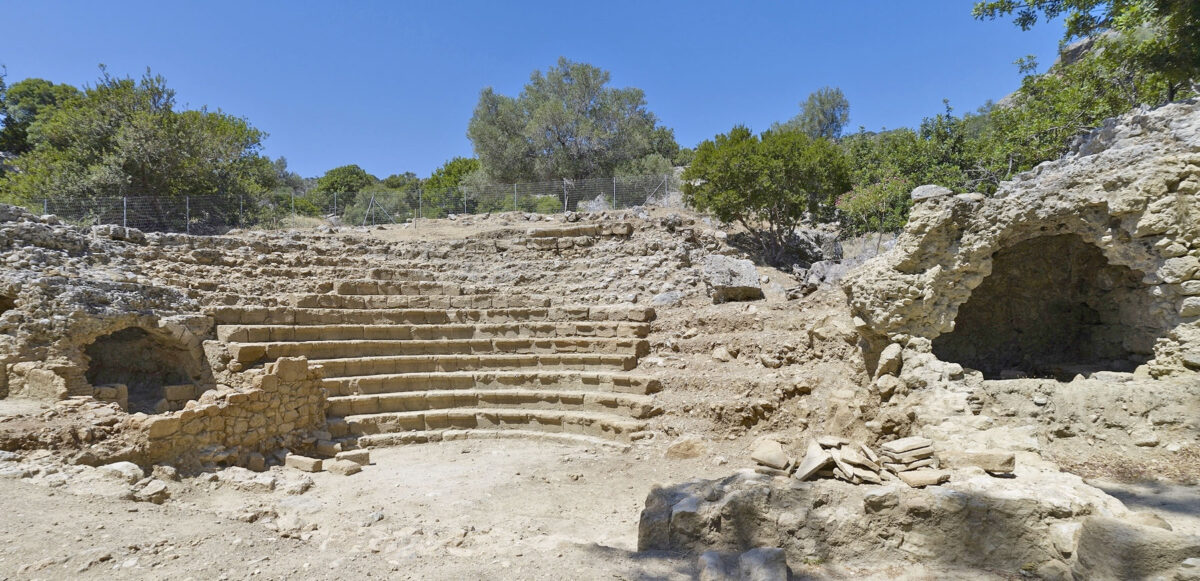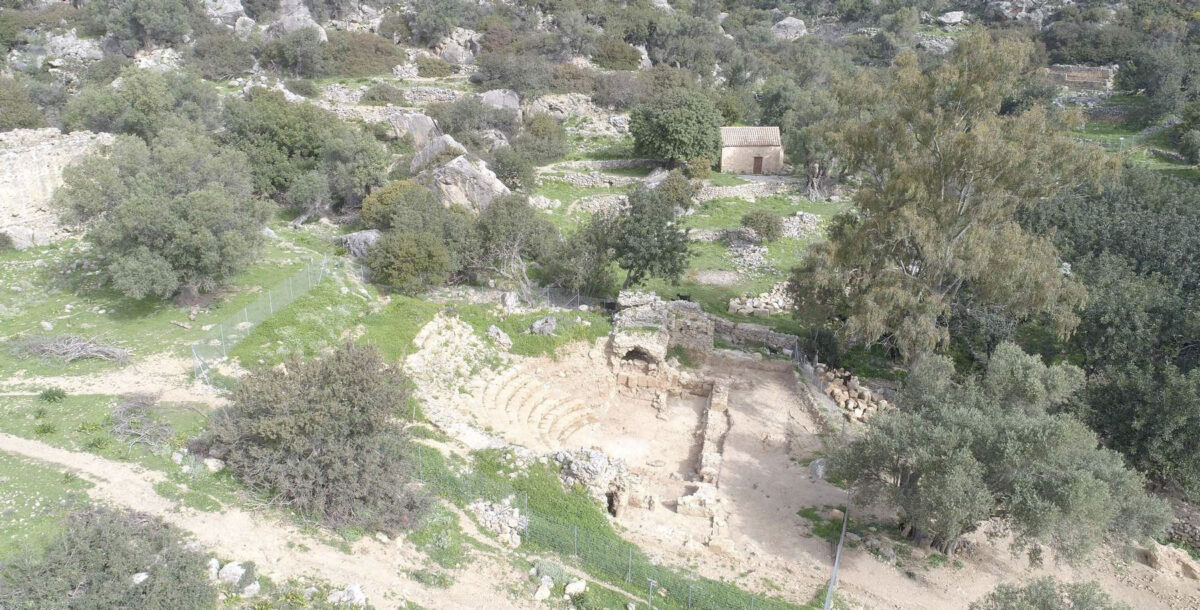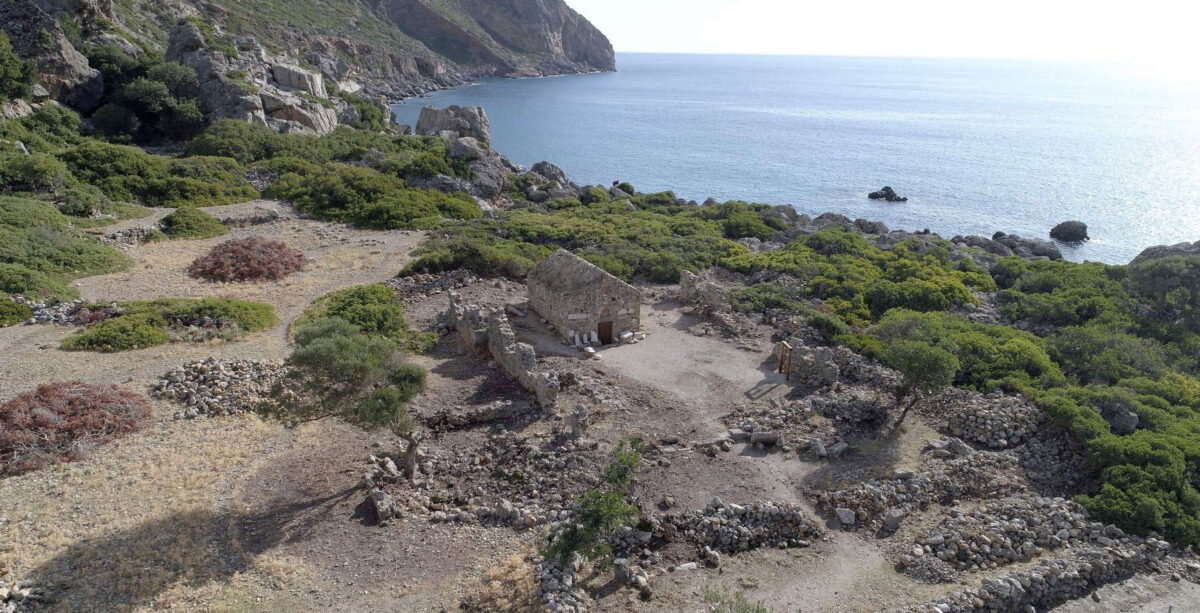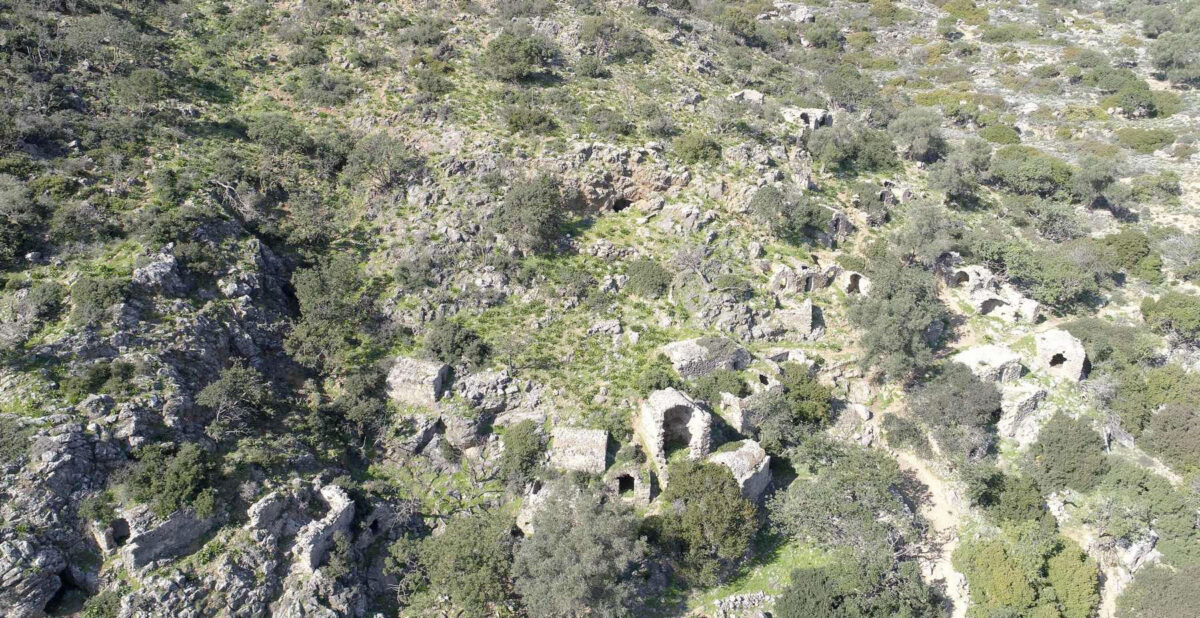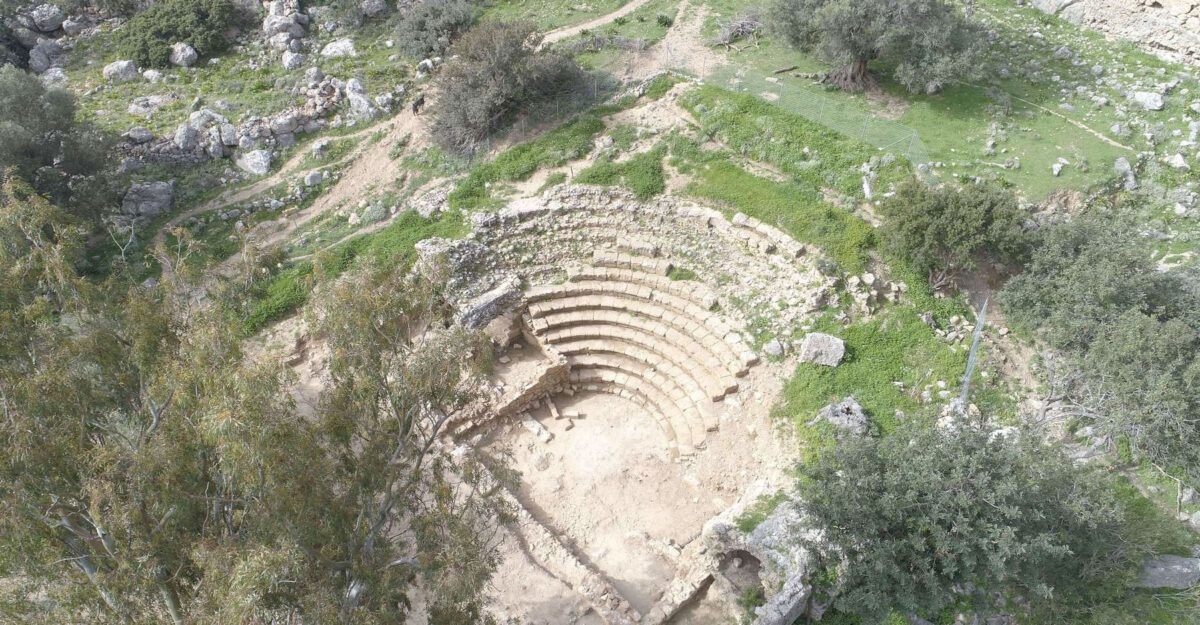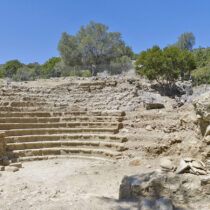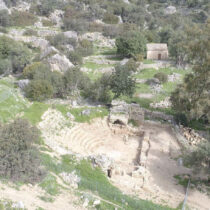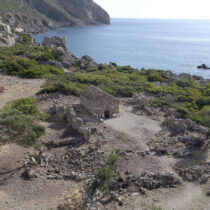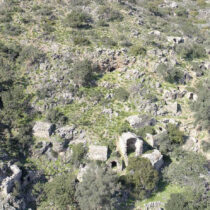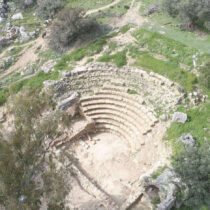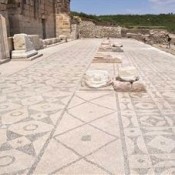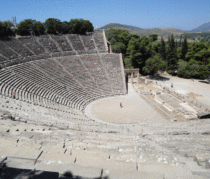For the first time in 62 years, as part of a project to promote and protect the archaeological site of Lissos, in Chania, an excavation was carried out which brought to light a large part of a public building, in the form of an odeon or bouleuterion, facing east.
Lissos, an ancient autonomous city, religious centre and seat of the League of Oreians in the 3rd century BC, evolved in the verdant valley of Agios Kirkos enclosed by mountains and with an outlet to the southwestern sea of Crete . The unique archaeological landscape of particular natural beauty includes the Asclepeium, which came to light in 1959, the architectural remains of public buildings, an impressive Greco-Roman necropolis and the two single-chamber Byzantine churches. The archaeological site is accessed either by sea or via the E4 European path, which means that the area has remained unspoiled by newer interventions but at the same makes it difficult to carry out the works.
The first research phase brought to light part of the stage, two side chambers with a vaulted ceiling and 14 rows of tiers from the koilon, which has a built-in passage and is most probably founded on the natural soil. Most intact seats are preserved in the south and southwest. By contrast, the northwestern part of the koilon has been particularly damaged. Its destruction was caused when huge rocks, brought from the adjacent torrent , went through the building diagonally towards the east. The overflowing of the torrent was possibly due to the earthquake in late Roman times (4th century AD), which destroyed most of the ancient sites of western Crete. A first estimate of the period this remarkable monument was constructed can be determined as the early Roman times (1st century AD).
In the next research phase, the excavation must be completed in order to clarify whether the monument has external masonry, an necessary fact for preparing the study of its restoration and promotion. Nevertheless, the discovery of a public building at a central point of the ancient city and in proximity to the famous Asklepeion adds new data to the region’s history and archaeology
The promotion project was implemented by the Ephorate of Antiquities of Chania, with a budget of €300,000 and funding from the Public Investment Programme of the Region of Crete. As part of the project, arrangements and configurations were made on the tour paths that cross the archaeological site and surround the two Byzantine churches. The guard’s lodge and shelter were repaired, according to the approved study by the architect-civil engineers Isidoros Plakotaris and Nikos Hatzidakis, information boards and sign posts were created, and a printed brochure was published on the Lissos archaeological site.
The project was implemented with the coordination of Dr. Eleni Papadopoulou, Head of the Ephorate of Antiquities of Chania and the direction of Dr. Aikaterina Tzanakaki, Deputy Head of the Department of Prehistoric and Classical Antiquities and Museums of the Ephorate of Antiquities of Chania. The supervision team included the employees of the Ephorate, keeper of Lissos antiquities Ioannis Giakoumakis and surveyor engineer Christina Frangonikolaki,. The Ephorate’s accountant Argyro Felesaki was responsible for the accounting and administration.The architectural impressions and design of the information boards were done by architect and civil engineer Isidoros Plakotaris, while the topography and photogrammetry impression was made by topographical engineer Andreas Kanellakis.
